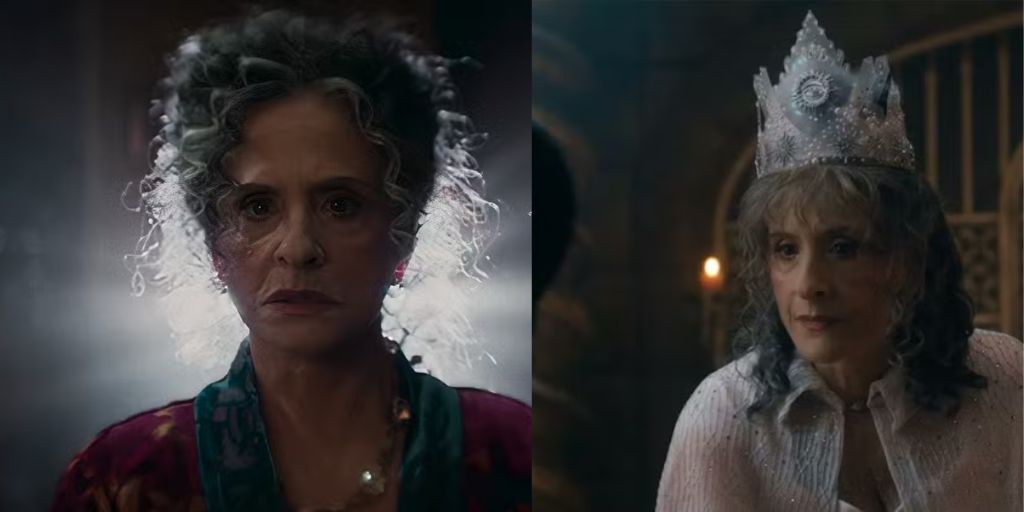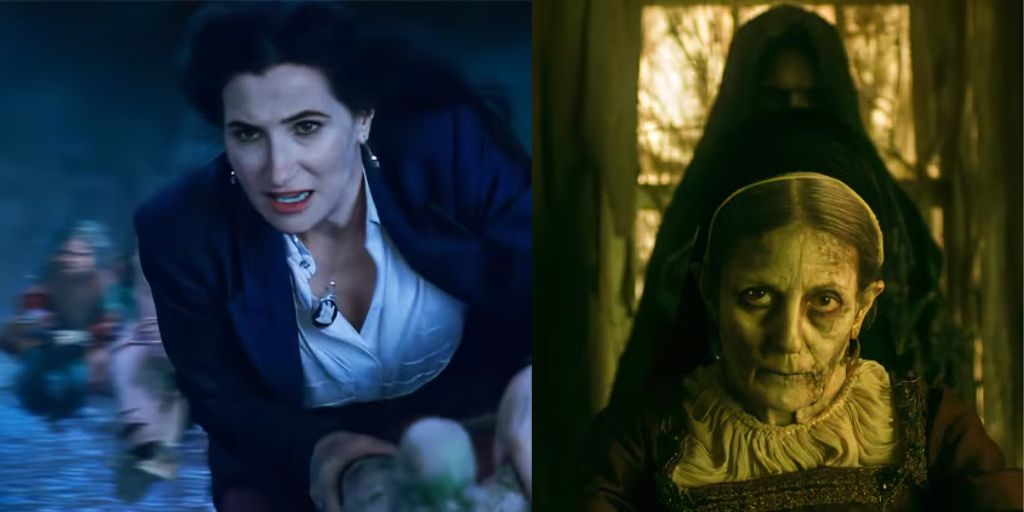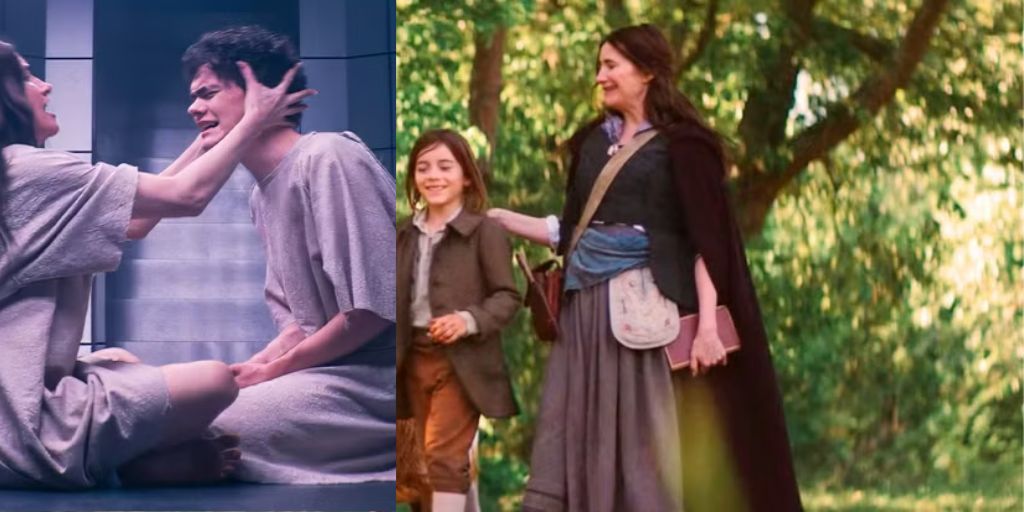When Agatha All Along first started, its story seemed simple. The show introduces Agatha Harkness, played by Kathryn Hahn, who is a powerful witch.
She wants to regain her magic, which she has lost. To do this, she convinces a group of other witches to join her on a journey down the Witches’ Road.
This journey is based on an old legend. According to the legend, a witch can get what she desires if she survives the various challenges along the Road. However, to access this Road, the witches must form a group called a coven. Together, they must sing “The Ballad of the Witches’ Road” to open the path.
As the series progresses, viewers discover that nothing is as it appears. The last two episodes of the show reveal shocking truths about the Witches’ Road and the Ballad. The answers that were hidden in plain sight completely change the understanding of the entire series.
It turns out that the Witches’ Road did not really exist; Agatha made it up as an elaborate trick to deceive others. Billy Maximoff, portrayed by Joe Locke, inadvertently creates the horrifying trail that all the characters have been following.
The origins of the Ballad are just as surprising. In a flashback scene, viewers are transported back to the 1750s. Here, we see a young Nicholas Scratch, played by Abel Lysenko, who invents the song.
Nicholas creates the tune on a whim, using his vivid imagination, while Agatha adds more lyrics as they sing together. Since the Witches’ Road is not real, the phrase “Witches’ Road” is just a fun melody that they enjoy creating and singing.
After Nicholas performs the song in a crowded tavern, the idea of the Witches’ Road begins to spread among the local witches.
One witch hears Agatha singing a mournful version of the Ballad at Nicholas’ grave and asks her for more information about this secret and alluring Road.
Even though neither Nicholas nor Agatha intended any harm when they wrote the song, Agatha, who is a grieving mother, sees a chance to use their song to her advantage. She decides to turn their creation into a trick to lure other witches.

Over the next several centuries, Agatha ensnares countless covens. She promises to guide them to the Witches’ Road, claiming that singing the Ballad is the only way to reach it.
However, when the “door” to this non-existent Road never appears, Agatha cleverly goads the witches into attacking her.
This allows her to absorb their powers and maintain her strength. By repeating this deception over and over again, Agatha gives the fictional Road its own kind of power.
The idea of the Road spreads throughout the witch community, leading many to believe that the Road is real and that Agatha is the only known survivor of its dangers.
By the time Agatha All Along takes place, the myths surrounding the Witches’ Road and the Ballad have grown significantly.
The witches have elevated both the Road and the Ballad into powerful myths within their community. Musician-witch Lorna Wu creates a popular cover of the Ballad and turns it into a protection spell for her daughter, Alice.
This connection must resonate with Agatha on some level. Agatha’s long con is an easy way for her to kill other witches, but it also means that she constantly carries her son’s memory with her. The song serves as a bittersweet reminder of her past and her loss.
Billy’s role in the story is crucial as he helps to advance the legend of the Road into something tangible. He is a confused young man searching for answers about his identity and his lost twin brother. He believes that braving the Witches’ Road will help him find his brother.
Just like his mother, Wanda Maximoff, played by Elizabeth Olsen, Billy possesses the ability to create things spontaneously, even though he does not realize it. His strong belief in and desire for the Road allows his magic to create a real path for the characters to traverse.
This is why Agatha takes a particular interest in Billy, who manifests her son’s song into reality. Unlike in WandaVision, this time, the focus has been on Agatha and Billy all along.
As the show unfolds, Agatha’s complex relationships and secrets begin to reveal themselves. She uses her charm and cunning to manipulate those around her, showing how far she will go to achieve her desires.
The trials and tribulations of the witches are not merely obstacles; they are also reflections of their fears and aspirations. Agatha’s story is one of loss, ambition, and the lengths a mother will go to protect her child’s memory.
The tension builds in each episode as Agatha’s past and her relationship with her son come to light. Viewers see how her actions are shaped by her grief and longing. The Ballad becomes a haunting reminder of what she has lost, even as she uses it to gain power.
Agatha’s character is not just a villain; she is a mother trapped in her own tragic narrative. Her internal struggles resonate with the audience, making her a compelling character.

As the show progresses, the connection between Agatha and her son, Nicholas, deepens. Flashbacks illustrate their close bond, showcasing how their creative process strengthens their relationship.
The songs they create together are filled with love and joy, contrasting sharply with Agatha’s later actions. This duality makes her character more relatable, as viewers see both the loving mother and the cunning witch.
The themes of power, loss, and the search for identity are woven throughout Agatha All Along. The series challenges the traditional understanding of good and evil.
Agatha’s character is multifaceted, illustrating that even those who seem evil may have deep motivations rooted in pain. The show raises questions about the nature of morality and the choices individuals make in their pursuit of happiness.
As Billy’s quest intertwines with Agatha’s, a transformation occurs. Billy’s determination to find his brother propels him on a journey that leads him to confront Agatha and the myths she has created.
Their paths converge in a dramatic and emotional way, highlighting the importance of family and the lengths people will go to find connection.
Agatha’s manipulation of the Ballad serves as a central plot point. It illustrates how stories can grow over time, shifting in meaning as they are passed down through generations.
The song becomes a symbol of both hope and despair, showcasing the duality of Agatha’s character. While she uses the Ballad to deceive others, it also holds significant emotional weight for her, reminding her of her lost son and the love they shared.
As the final episodes draw near, the various threads of the narrative come together. Agatha’s deception is not solely about power; it is also about the connections we form with others.
Her relationship with Nicholas is pivotal, revealing her vulnerabilities and desires. The bond they share is a central theme in the story, emphasizing the importance of love and memory.
The show concludes with a deeper understanding of Agatha’s complexities. She is not merely a villain but a character shaped by love, loss, and the desire for connection.
The legacy of her song and the myth of the Witches’ Road become intertwined, leaving viewers to ponder the nature of magic, reality, and the power of storytelling.
In the end, Agatha All Along presents a rich collection of characters, each with their own stories and motivations.
The journey through the Witches’ Road serves as a metaphor for the paths we take in life. It reminds us that our choices shape our destinies and that our pasts continue to influence our present.

The series leaves a lasting impact, encouraging viewers to reflect on the complexities of human emotions and relationships. Through its unique storytelling and character development, Agatha All Along captures the audience’s imagination.
The show invites viewers to think critically about the nature of magic and the stories we create, both in fiction and in our own lives. As Agatha Harkness navigates her own trials, she reminds us of the power of creativity and the enduring impact of love and loss.
The story of Agatha All Along provides a fascinating coverage of power, grief, and the human experience through the lens of witchcraft. Agatha Harkness emerges as a deeply complex character, driven by the love for her son and the pain of his loss.
Her creation of the Witches’ Road and the Ballad illustrates how myths can grow, reflecting both personal desires and collective beliefs within the witch community.
The series skillfully intertwines themes of ambition and manipulation with the profound emotional ties that bind family members together.
As Billy Maximoff goes on his journey, he becomes a symbol of hope and resilience, representing the quest for identity and connection in a world filled with uncertainty.
The interplay between Agatha and Billy showcases how our beliefs can shape reality, blurring the lines between illusion and truth.
Agatha All Along invites viewers to reflect on their own narratives, emphasizing the significance of memory and the stories we choose to tell.
The show serves as a reminder that, while magic may be an enchanting concept, the most powerful forces are often the bonds of love and loss that define our lives. This intricate tale resonates with audiences, encouraging them to embrace the complexities of their own journeys.



